Piracy
Somali Pirates Hijack Chinese Vessel: A Grim Reminder of Persistent Maritime Threats
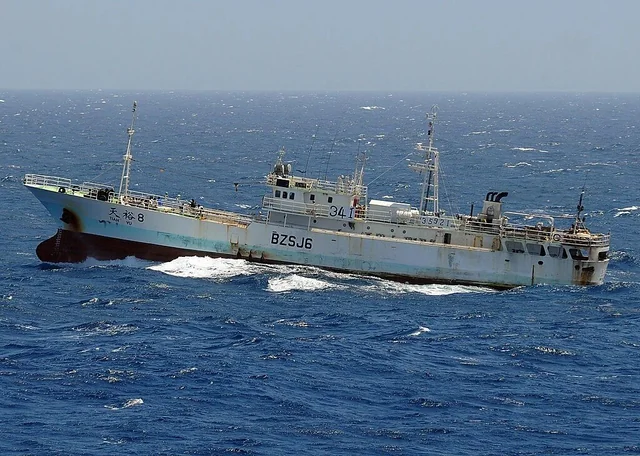
Armed Somali pirates have seized a Chinese fishing vessel with 18 crew members near Puntland’s northeastern coast, marking a significant escalation in piracy in the region after a decade of relative calm. The hijacking, confirmed by the European Union Naval Force (EUNAVFOR), underscores the resurgence of maritime threats in Somali waters, driven by economic instability, reduced international patrols, and shifting shipping routes.
The vessel, operating within Somalia’s territorial waters, was overtaken by pirates armed with AK-47s and machine guns. Fortunately, no injuries were reported among the crew. EUNAVFOR, operating under Operation Atalanta, has dispatched naval assets to monitor the situation and is in communication with Somali, Chinese, and European Union authorities to facilitate a resolution.
EUNAVFOR’s statement classified the event as “armed robbery at sea” and emphasized the importance of vessel registration with the Maritime Security Centre – Horn of Africa (MSCHOA) to enhance situational awareness and rapid response capabilities.
Somali piracy, which peaked between 2008 and 2012, has resurged due to reduced naval patrols and changing shipping dynamics. The region, once notorious for ransom-driven hijackings, had seen a decline in such incidents thanks to coordinated international efforts. However, recent data suggests a worrying trend: 43 piracy-related incidents, including 27 confirmed attacks, were reported between November 2023 and October 2024. Notable cases include the $5 million ransom for the MV Abdullah and the foiled hijacking of the cargo ship Basilisk
The uptick in piracy coincides with increased maritime traffic in Somali waters, as vessels reroute from the conflict-ridden Red Sea and Bab el-Mandeb Strait. Analysts caution that these diversions have made Somali waters a prime target for opportunistic attacks.
Underlying Issues Driving Piracy
The resurgence of piracy highlights deeper systemic issues in Somalia, including economic instability, illegal fishing, and governance challenges. These factors, combined with Somalia’s lack of effective coastal law enforcement, have created an environment where piracy can thrive. Somali pirates have adapted their tactics, employing commandeered vessels as floating bases to strike at targets farther offshore.
While international naval patrols remain active, experts argue that these efforts alone are insufficient. Sustainable solutions require addressing the root causes of piracy, including poverty, unemployment, and illegal exploitation of Somalia’s marine resources
The hijacking of the Chinese vessel serves as a stark reminder of the enduring vulnerabilities in global shipping, particularly in high-risk areas like the Horn of Africa. With over 600 vessels transiting Somali waters monthly—double the volume recorded last year—the potential for further disruptions to international trade remains significant.
Increased cooperation between regional governments, international naval forces, and private shipping companies is critical to curbing the resurgence of piracy. Additionally, initiatives aimed at bolstering Somalia’s economy and governance are essential to achieving long-term stability.
This incident not only reignites concerns about maritime security but also underscores the need for a renewed global focus on the socio-economic challenges that fuel piracy in Somalia
ASSESSMENTS
Gunfire in the Gulf: Bulk Carrier Ambushed off Yemen’s Coast
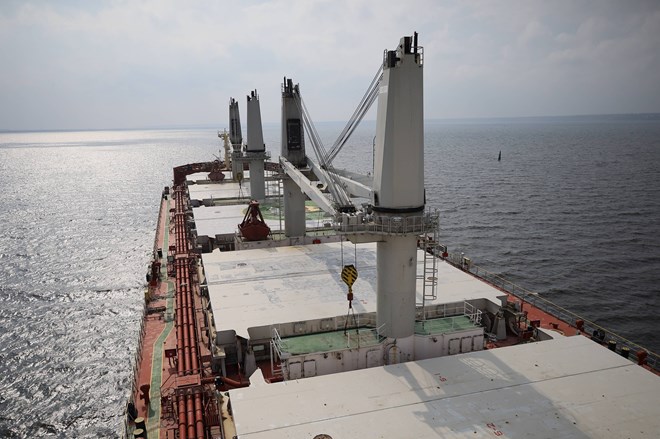
High seas alert as armed boats pursue merchant ship near Aden, reigniting piracy fears and exposing regional maritime chaos.
A merchant bulk carrier is chased by armed boats near Yemen in a dramatic 2-hour incident, reigniting fears of piracy and Houthi insurgency in the Gulf of Aden.
A quiet shipping lane turned into a maritime standoff Tuesday evening when a bulk carrier traversing the Gulf of Aden was pursued for nearly two hours by multiple small, armed boats—an alarming sign that the waters off Yemen are once again boiling with threats.
UKMTO confirmed the incident occurred 100 nautical miles east of Aden, with gunfire reported and the vessel forced into evasive maneuvers toward the Yemeni coastline. Though no casualties were reported and the ship managed to continue its course, the confrontation has set off security alarms across the maritime world.
Who were these armed men? That’s the burning question. While some suspect traditional piracy, analysts at Neptune P2P Group argue the tactics were uncharacteristic—suggesting a more dangerous twist. Could this be a dry run for Houthi-aligned maritime militia? Or a rogue coastal faction flexing its muscle?
The Houthis, fresh off a ceasefire hiatus tied to Gaza, have recently threatened to resume attacks on shipping—especially those with Israeli links. While they’ve stayed silent about this specific incident, the implications are ominous.
What’s certain is this: piracy in the Gulf of Aden never truly died. The brief calm following the 2023 resurgence now seems like a prelude to a new wave of asymmetric sea warfare. The EU’s extension of Operation Atalanta through 2027 suddenly looks like a prophetic move.
And the danger isn’t isolated. From Somali pirates re-emerging to Houthi threats and rogue militias in war-torn Yemen, the Gulf of Aden is becoming a maritime minefield—one gunboat away from full-scale chaos.
The next incident may not end with a safe escape—but a ship taken hostage.
Piracy
Piracy Resurgence: Yemeni Fishing Vessel Hijacked Off Somali Coast
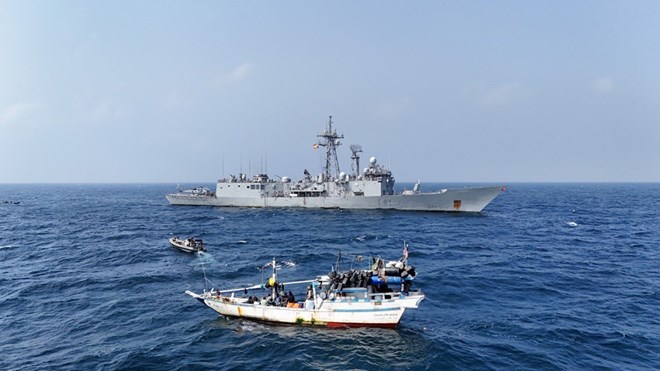
A Revival of Maritime Threats: Armed pirates have captured a Yemeni fishing boat near Somalia, marking a concerning uptick in regional piracy.
A Yemeni-flagged fishing vessel was hijacked by seven armed men off the Somali coast near Durdura, close to Eyl. This development has reignited concerns about maritime security in a region long notorious for its lawlessness at sea.
The European Union Naval Force (EUNAVFOR) Operation ATALANTA, tasked with countering piracy in the area, confirmed the hijacking. The operation is actively coordinating a response with the Combined Maritime Forces (CMF) and the Yemeni Coast Guard to address this security breach and safeguard the eight Somali crew members taken hostage.
This incident is part of a disturbing trend of increased pirate activity off Somalia’s coast, which had seen a relative decline in recent years thanks to robust international naval efforts. Recent months, however, have witnessed a troubling spike in attacks, including the capture and subsequent release of the Yemeni dhow Saytuun-2 in February and another vessel, the Al Najma, earlier that month.
Maritime security experts are concerned that pirates are utilizing hijacked dhows as “mother ships,” which significantly enhances their operational reach into the Indian Ocean and poses a heightened threat to international shipping lanes. This strategy allows pirates to conduct raids far from their coastal strongholds, targeting unsuspecting merchant vessels across a broader expanse.
The resurgence of piracy since November 2023 underscores the persistent vulnerability of maritime routes in this region and the complex challenges faced by naval forces in securing these waters. Such incidents not only jeopardize the lives of crew members but also disrupt international shipping—a critical artery for global trade.
EUNAVFOR has reiterated calls for all vessels traveling through the area to register with the Maritime Security Centre Indian Ocean’s Voluntary Registration Scheme. This initiative aims to bolster monitoring and quick response measures to counter piracy threats effectively.
As the international community grapples with these renewed security challenges, the situation remains fluid, with ongoing efforts to ensure the safety of the seas and the continuity of commerce without the looming threat of piracy.
Piracy
Somalia’s Pirates Are Back—And Mogadishu’s Crooks Are Bankrolling Them
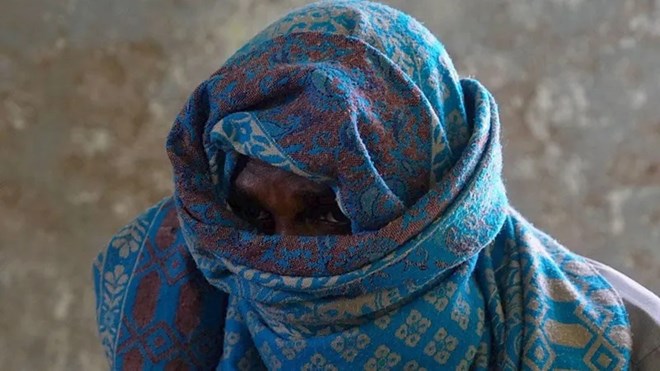
Pirates hijack ships while Mogadishu’s elites hijack the ransom money. Somalia’s corruption runs deeper than the ocean.
Somalia’s waters are on fire again. Hijacked boats, hostage crews, and Western navies scrambling to respond. The pirates are back, but they were never really gone. They just got smarter. Or rather, their real bosses in Mogadishu did.
This isn’t just desperation on the high seas—it’s a government-sanctioned industry, a money-making machine where Somalia’s corrupt elite sit back and collect their cut while Puntland’s fighters do the dirty work.
Fishermen have been pushed to the brink, stripped of their catch by foreign trawlers plundering Somali waters. Mogadishu’s government doesn’t fight back, doesn’t protect its own. Instead, it bleeds its people dry with taxes and regulations, leaving them with one option: piracy. And when the ransoms roll in, who takes the first cut? Not the desperate young men risking their lives in Eyl.
It’s the suits in Mogadishu, the so-called leaders who sit in air-conditioned offices and profit off the chaos. They aren’t just failing to stop piracy—they’re funding it, turning Somalia’s lawlessness into a goldmine for themselves.
Every hijacked ship, every hostage taken, every Western response plays right into their hands. While European navies chase ghosts across the Indian Ocean, the real criminals stay untouched.
Mogadishu’s elite have found the perfect racket: keep Puntland weak, let the pirates thrive, and make sure the money flows back into their pockets. They build beachside mansions while international forces waste time trying to stamp out a fire that Somalia’s own leaders are feeding.
The West is blind, distracted by the chaos in the Red Sea and Ethiopia’s power plays. EUNAVFOR is overstretched, focusing on everything except the real problem. The Somali government will shake hands with the UN, talk about fighting piracy, and then walk away with another briefcase full of cash. It’s not incompetence. It’s a strategy.
Somalis are done with the lies. Social media is exploding with outrage, calling out the betrayal of a government that has sold its own people to the highest bidder. This isn’t a pirate problem—it’s a political one.
The world needs to stop negotiating with the frauds in Mogadishu and start cutting off the money. Because if no one stands up now, Somalia’s future won’t belong to its people. It will belong to the criminals in power, watching from the shore as the world burns around them.
Piracy
Somali Piracy Resurfaces: Armed Raiders Seize Fishing Boat Off Horn of Africa
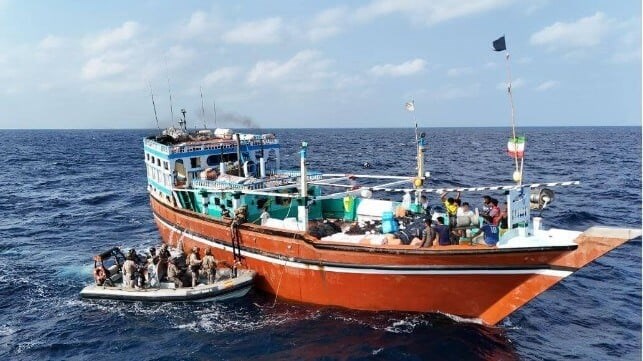
Suspected Somali pirates hijack Yemeni fishing vessel as Red Sea instability fuels resurgence of maritime attacks.
Piracy is making a violent return to the Horn of Africa. Late Monday, suspected Somali pirates hijacked a Yemeni fishing boat near Eyl, Somalia, raising alarms over growing maritime insecurity. The European naval operation EUNAVFOR Atalanta has launched an investigation, confirming that the pirates seized three small boats equipped with high-powered engines.
After years of decline, Somali piracy is resurging—driven by the chaos spilling from the Red Sea, where Houthi rebel attacks have destabilized critical trade routes. In 2011, Somali pirates launched 237 attacks, costing the global economy billions. Though international naval patrols once suppressed the threat, recent months have seen a dangerous uptick, with seven reported incidents in 2024 alone.
The piracy revival threatens regional stability, shipping lanes, and global commerce. If left unchecked, Somalia’s lawless waters could once again become a battleground for hijackers, warships, and ransom-hungry militias.
Piracy
Somali Pirates Demand $10M for Hijacked Chinese Vessel, Sparking Global Concerns
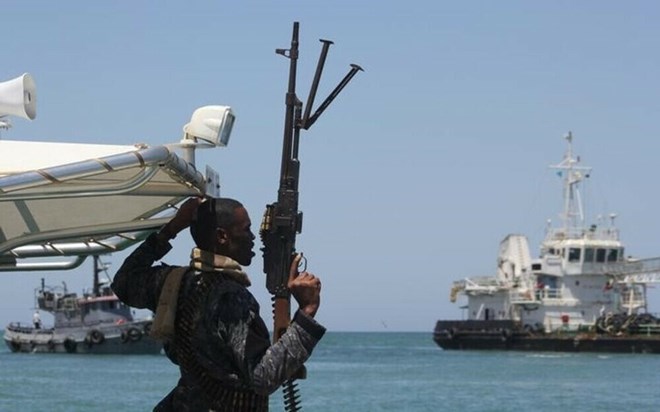
The hijacking of a Chinese-owned fishing vessel near Puntland, Somalia, accompanied by a $10 million ransom demand, highlights a troubling resurgence of piracy in the region. The incident, involving betrayal by security personnel hired to protect the vessel, reflects evolving tactics among Somali pirates and raises alarms about gaps in regional and international maritime security.
This hijacking represents a serious challenge for Puntland’s authorities, who have publicly rejected the possibility of paying a ransom and are reportedly considering a military rescue operation. While such a stance reinforces Puntland’s commitment to curbing piracy, it also carries significant risks, as past rescue attempts have sometimes resulted in harm to hostages. The pirates’ decision to reject a $1 million offer and maintain their $10 million demand suggests confidence in their bargaining position, likely bolstered by recent successes in extracting multimillion-dollar ransoms.
International forces, including the European Union Naval Force (EUNAVFOR), have reactivated efforts to monitor piracy in the region through Operation Atalanta. While naval forces near the hijacked vessel aim to prevent escalation and support negotiations, their presence underscores the limits of external interventions. Despite advances made in suppressing piracy between 2008 and 2012 through coordinated patrols, reduced maritime security in recent years has allowed piracy to reemerge, particularly as foreign fishing vessels encroach on Somali waters and deplete local resources.
Somali pirates are increasingly organized, using hijacked vessels as floating bases to extend their reach further offshore. This incident is part of a broader trend, with EUNAVFOR reporting 43 piracy-related incidents since November 2023, including 27 confirmed attacks. The growing sophistication of these operations, such as the March hijacking of the MV Abdullah, underscores the persistence of piracy as a symptom of Somalia’s unresolved economic and governance challenges. Illegal fishing by foreign fleets remains a significant grievance, fueling resentment among coastal communities and creating fertile ground for piracy networks.
The Puntland administration’s firm stance against negotiation reflects both political pressure and a desire to project strength, but it also underscores the difficulties of balancing immediate crises with long-term strategies. Pirates, aware of local dynamics and international scrutiny, have kept the hijacked vessel moving to evade capture. Meanwhile, efforts by local business leaders to mediate have failed, indicating the pirates’ confidence in their position.
For Somalia, the resurgence of piracy represents a multidimensional crisis, linking economic exploitation, political instability, and international security concerns. Addressing this challenge will require coordinated efforts from Somali authorities, international naval forces, and broader diplomatic engagement to tackle the root causes of piracy. Without sustainable solutions to the economic hardships and governance gaps driving piracy, the waters off Somalia will remain volatile, threatening global shipping lanes and regional stability.
Piracy
Somali pirates demand ransom for Chinese vessel, after first being paid to protect it

Pirates demand ransom after turning on the Chinese crew they were contracted to safeguard, raising fears of a resurgence in Indian Ocean piracy.
Somali pirates hijacked a Chinese fishing vessel they were originally contracted to protect, taking its 18 crew members hostage and demanding ransom for their release. The incident, which has drawn international attention, underscores the fragile security landscape in the Indian Ocean, where piracy is resurging after years of relative calm.
The pirates, armed with AK-47 rifles, commandeered the ship and began moving it along the coast near Eyl, a traditional pirate stronghold in Somalia’s Puntland region. Local police confirmed that additional pirates later joined the group, bolstering their numbers. While the exact timing of the hijacking is unclear, the European Union’s anti-piracy force, Operation Atalanta, classified it as armed robbery and has been closely monitoring the situation.
Attempts to negotiate a ransom have so far failed. A Somali company, acting on behalf of the vessel, reportedly offered $300,000 to secure the crew’s release, but the pirates rejected the proposal. Fishermen in the region observed the ship near Eyl but noted that the pirates retreated to deeper waters, fearing both local coastguards and the presence of international naval forces.
This is not an isolated incident. Earlier this year, Somali pirates hijacked the Bangladeshi bulk carrier MV Abdullah, demanding and securing an undisclosed ransom. These events mark a troubling resurgence in piracy, as opportunistic groups exploit gaps left by the redeployment of international forces that had once effectively curbed such activities.
While the EU’s naval force reassures that the crew remains unharmed, the escalation of piracy in these waters raises pressing concerns about maritime security in the region. Somali pirates, notorious for their high-stakes operations, may now be emboldened to expand their activities, posing risks to global shipping lanes and regional stability.
Piracy
Somali Pirates Resurface After 5-Month Lull, Threatening Global Shipping
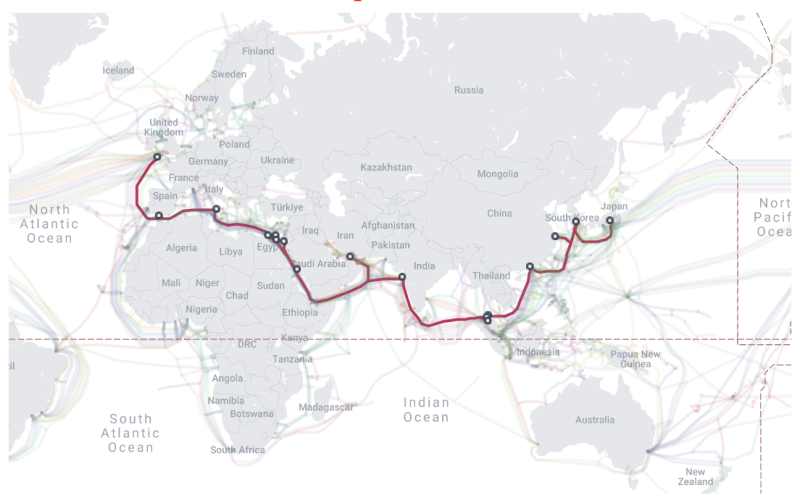
Somali pirates have reemerged after a five-month hiatus, renewing concerns about the security of global shipping routes. The European Union Naval Force (EUNAVFOR), operating under Operation ATALANTA, recently issued a warning after a suspected pirate action group (PAG) departed Somalia’s northern-central coast. This signals a resurgence of piracy in the region, where lawlessness has created fertile conditions for maritime crime once again.
The Maritime Security Centre – Horn of Africa (MSCHOA) reported that a group of 13 armed pirates left Ceel Huur near Hobyo and is making its way toward the Indian Ocean. “All vessels are advised to proceed with caution and report any suspicious activity,” MSCHOA warned, heightening fears of renewed hijackings and violent confrontations on the seas.
The resurgence follows months of relative calm, with the last major incident occurring in June 2024 when the Marshall Islands-flagged PACIFIC HONOR was approached by suspicious vessels. Though that incident ended without violence, it underscored that Somali pirates had not disappeared, but were instead lying in wait for more favorable conditions. Martin Kelly, head of advisory at EOS Risk Group, noted that the end of the monsoon season now provides pirates with better weather to resume their activities. “We’ve been warning clients of the increased risk as soon as conditions improved,” he added.
While global piracy incidents have declined significantly in recent years, the threat posed by Somali pirates remains. According to the International Maritime Bureau’s (IMB) 2024 report, piracy incidents from January to September dropped to their lowest level since 1994. However, Somali pirates continue to operate, albeit with more sophisticated tactics. No longer limited to small skiffs, pirates are now using dhows and fishing vessels as “mother ships,” which allow them to strike far out at sea, sometimes as much as 800 nautical miles from the coast. This shift complicates international efforts to prevent and intercept their attacks.
Red Sea Disaster Looms: US Envoy Warns of Imminent Environmental Catastrophe
Recent incidents serve as a reminder of the threat these pirates pose. In December 2023, the MV Ruen was hijacked and held for three months before Indian naval forces intervened. Similarly, in March 2024, the MV Abdullah was seized, with the crew only released after a ransom was paid. Somali pirates are not only active but also increasingly emboldened, demanding substantial ransoms that fuel their operations.
This renewed piracy wave is part of a broader security crisis in the region, where Somali pirates operate alongside other threats, such as Houthi rebel attacks in the Red Sea and Gulf of Aden. The rising danger in these waters has prompted shipping companies to reroute their vessels around the Cape of Good Hope, significantly increasing travel times and operational costs. Fewer ships are now available to patrol piracy hotspots in the Indian Ocean, giving pirates greater freedom to operate.
Despite declining global piracy numbers, Somali waters remain a high-risk area. According to the IMB, there were 79 piracy incidents globally between January and September 2024, the lowest recorded since 1994. Nonetheless, Somali pirates remain a potent force. During these incidents, 111 crew members were taken hostage, 11 were kidnapped, and reports of violence against crew members are increasing.
Houthi Attacks in Red Sea Trigger Somali Piracy Resurgence, Says EU Naval Chief
The financial toll of piracy is immense. The global economy loses billions annually to piracy, with estimates for 2020 reaching $37 billion. Somali piracy has long been one of the most disruptive forces in international shipping, and the costs of rerouting vessels and paying ransoms only add to the growing burden.
As Somali pirates return to the high seas, the international community faces a renewed challenge. Although naval forces, including those from India, have played key roles in recent rescues, the evolving tactics of pirates and the shifting regional security landscape demand continued vigilance. The resurgence of piracy not only threatens the safety of seafarers but also has profound economic implications, underscoring the need for coordinated global efforts to address this persistent menace.
Analysis
Beauty in the Crossfire: Miss Somalia Pageant Amid Violence

Amid Explosions and Controversy, Somali Women Defy Odds in Groundbreaking Beauty Pageant
On a night when most of Somalia tuned in to the Euro football final, a very different kind of spectacle unfolded at Mogadishu’s Elite Hotel. Hundreds gathered to witness the Miss Somalia pageant, a daring celebration of beauty and resilience in one of the world’s most dangerous places to be a woman. Just a kilometer away, the grim reality of Somali life was underscored by a car bomb explosion that killed five and injured twenty. The militant group al-Shabab, notorious for its reign of terror over Somalia, claimed responsibility for the attack.
The juxtaposition of a beauty pageant with such violence highlights the schizophrenic nature of life in Somalia. While pageant contestants paraded in glamorous gowns, the nearby explosion shattered the night, a stark reminder of the pervasive threat of terrorism. This contrast paints a vivid picture of a nation grappling with its identity and future.
Hani Abdi Gas, founded the competition in 2021. In a country where Islamist militants and conservative traditions dominate, her initiative is nothing short of revolutionary. Gas, who grew up in the Dadaab refugee camp in Kenya before returning to Somalia in 2020, sees the pageant as more than a beauty contest. It’s a platform for lifting women’s voices, fostering unity, and empowering Somali women.
Gas believes that Somalia, long deemed one of the worst places to be a woman, is ready to join the rest of the world in celebrating female beauty and aspiration. “I want to celebrate the aspirations of women from diverse backgrounds, build their confidence, and give them a chance to showcase Somali culture worldwide,” she said.
This year’s contestants reflected this diversity. Among them was a policewoman, a powerful symbol of women breaking barriers in a traditionally male-dominated society. However, not everyone was pleased. Many Somalis view beauty pageants as affronts to their culture and religion. Clan leader Ahmed Abdi Halane expressed disgust, saying, “Such things are against our culture and our religion. If a girl wears tight clothes and appears on stage, it will bring shame upon her family and her clan. Women are supposed to stay at home and wear modest clothes.”
Some women also oppose the pageant. Sabrina, a student, criticized the contestants for appearing in public without covering their necks, saying, “It is good to support the Somali youth but not in ways that conflict with our religion.”
Despite these criticisms, the pageant proceeded with its vibrant display of Somali culture. Aisha Ikow, a 24-year-old university student and make-up artist, was crowned Miss Somalia, taking home a $1,000 prize. Ikow, representing South-West state, vowed to use her platform to combat early marriage and promote girls’ education. “The competition celebrates Somali culture and beauty while shaping a brighter future for women,” she said.
The judging panel, which included Miss Somalia 2022 and a representative from the Ministry of Youth, found it hard to choose a winner. They assessed contestants on physical beauty, public speaking, and stage presence. An online vote, costing $1 per vote, funded the event and future international pageant participation.
The glitzy event in a luxury hotel contrasted sharply with the harsh realities faced by most Somali women. Four million Somalis, a quarter of the population, are internally displaced, with up to 80% being women. The UN ranks Somalia near the bottom on the Gender Inequality Index, with alarming rates of gender-based violence and female genital mutilation. Traditional practices still dictate that a rapist must marry his victim, and legal protections for women are severely lacking.
Despite these challenges, the Miss Somalia pageant signifies a slow but significant change. The fact that such an event could be held in Mogadishu, even amid nearby violence, indicates a shift in societal attitudes and an improvement in security.
The crowd at the Elite Hotel stayed until the early hours, undeterred by the attack’s proximity. They were engrossed in the pageant, the sound of the explosion drowned out by the waves crashing on the nearby beach.
In a nation torn by conflict and conservative values, the Miss Somalia pageant stands as a beacon of hope. It is a testament to the resilience of Somali women and their determination to carve out spaces of empowerment and celebration. As Somalia continues to navigate its complex identity, events like these are crucial in shaping a more inclusive and progressive future.
Kiin Hassan Fakat, reporting with Bilan Media, and Mary Harper, author of two books on Somalia, provide a lens into this transformative moment, capturing the courage and aspirations of Somali women amidst a backdrop of turmoil.
-

 Analysis2 months ago
Analysis2 months agoSaudi Arabia’s Billion-Dollar Bid for Eritrea’s Assab Port
-

 ASSESSMENTS1 month ago
ASSESSMENTS1 month agoOperation Geel Exposes the Truth: International Community’s Reluctance to Embrace Somaliland as a Strategic Ally
-

 Somaliland3 months ago
Somaliland3 months agoSomaliland and UAE Elevate Ties to Comprehensive Strategic Partnership
-

 Africa1 year ago
Africa1 year agoHow Somaliland Could Lead the Global Camel Milk Industry
-

 Analysis1 year ago
Analysis1 year agoIran escalates conflict, attacking Israel; US forces help Israel to intercept Iranian projectiles
-

 Analysis3 weeks ago
Analysis3 weeks agoFrom Cell to Summit: The Prisoner Who Became Syria’s President
-

 Top stories11 months ago
Top stories11 months agoGunmen Kill 11 in Southeastern Nigeria Attack, Army Reports
-

 Analysis1 year ago
Analysis1 year agoIsrael and Iran on Edge: Tensions Escalate Amidst Rising Threats





























